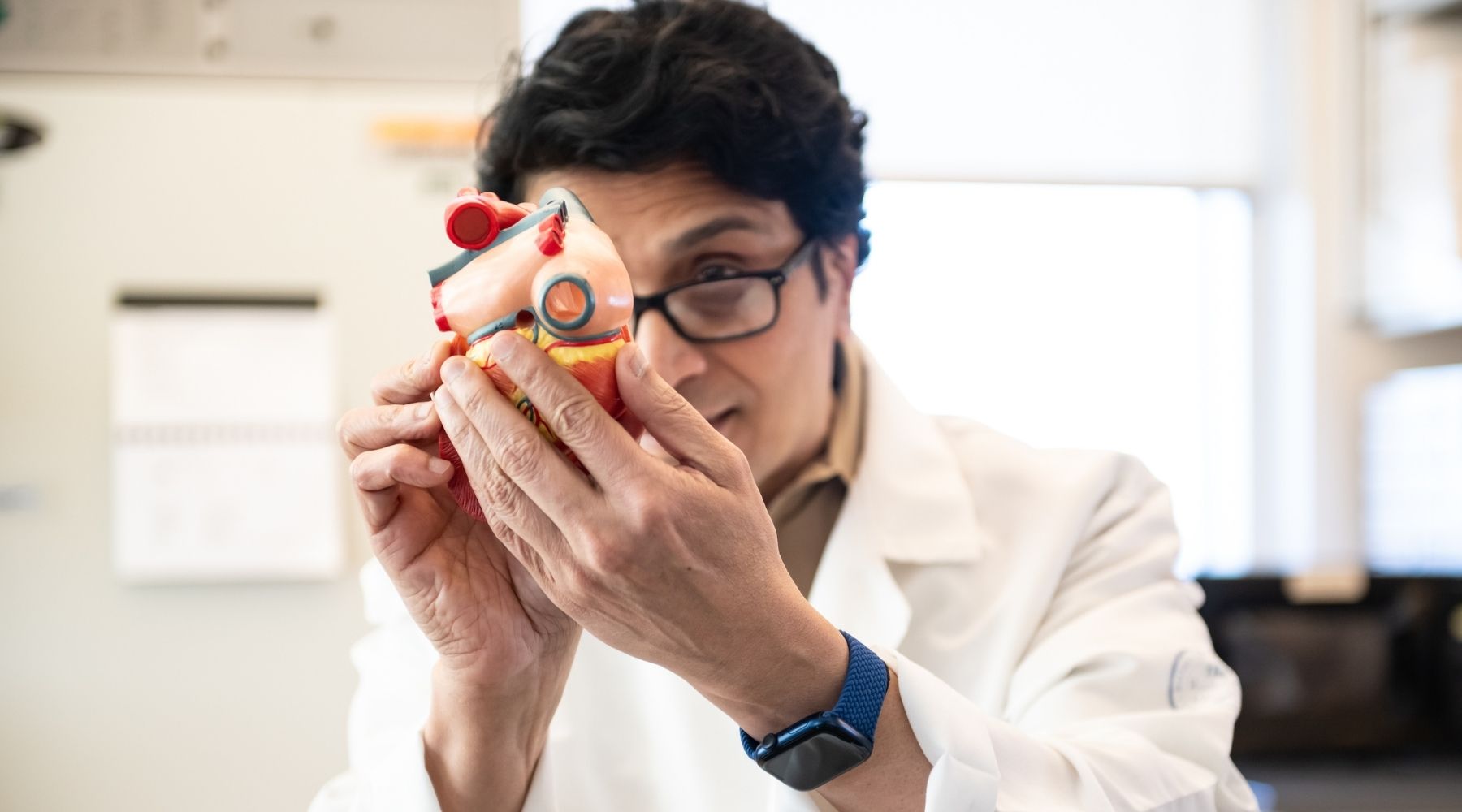Physicians and scientists have long suspected a connection between three separate illnesses that often affect older people. An Oklahoma Medical Research Foundation scientist recently verified that suspicion, providing a potential treatment pathway.
“We now believe these otherwise distinct conditions combine to form a vicious, life-threatening cycle of illness,” said Jasim Ahamed, Ph.D.
Using research models, Ahamed’s lab demonstrated the interrelation between aortic stenosis, a major heart valve disease that causes the aortic valve to narrow; anemia, a lack of sufficient red blood cells; and acquired von Willebrand syndrome, a bleeding disorder of the gastrointestinal tract. They found that anemia accelerates the overall disease process.
According to the American Heart Association, more than 12% of people over age 65 live with aortic stenosis, though most don’t experience symptoms until blood flow becomes greatly restricted. Left untreated, the condition can lead to heart failure and death.
Anemia can make you feel weak, tired, dizzy or out of breath. About 3 million people have anemia, according to the Centers for Disease Control and Prevention.
The third disorder in this cycle of illness, acquired von Willebrand syndrome and its resulting GI bleeding, can result from severe aortic stenosis, particularly in older people, Ahamed said. A valve replacement can restore life expectancy to near-normal levels in people with aortic stenosis, he said, “and notably, that procedure almost always reverses von Willebrand syndrome.”
Ahamed’s lab discovered the connecting link for this cycle of illness is TGF-beta1, a protein enriched by blood platelets. Previously, his lab found that platelet activation and release of this protein causes scar tissue buildup in aortic valves, leading to aortic stenosis.
In addition to using research models, Ahamed’s lab analyzed blood samples from research volunteers with severe aortic stenosis. Scientists found that patients over age 75 had higher levels of TGF-beta1 and were more anemic than those younger than 75.
The association between aortic stenosis and GI bleeding was discovered in 1958. While more study is needed, many scientists still think that aortic stenosis induces acquired von Willebrand syndrome, leading to GI bleeding and anemia. Ahamed’s lab showed that in addition, anemia activates TGF-beta1, exacerbating any existing aortic stenosis.
“Dr. Ahamed’s discovery provides a blueprint for possible therapeutic treatments,” said scientist Lijun Xia, M.D., Ph.D., who chairs OMRF’s Cardiovascular Biology Research Program. “His study shows promise for preserving health in scores of aging people with aortic stenosis.”
Ahamed’s discovery was published in the Journal of the American College of Cardiology: Basic to Translational Science. His study was funded in part by grant No. R01 HL148123 from the National Heart, Lung, and Blood Institute, part of the National Institutes of Health. Ahamed also received support from the Oklahoma City-based Presbyterian Health Foundation to purchase lab equipment for this research.



